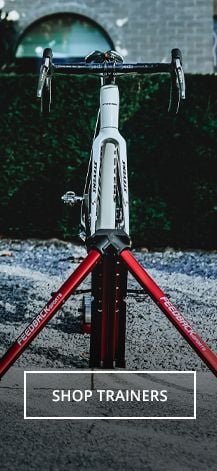Tubular Tire Installation - Glue
Racers and serious cyclists still seek out tubulars as their tires of choice due to their ride feel and performance. While clincher tires have made impressive gains over the past several years, tubular tires retain a devoted following thanks to their lighter system weight and silky smooth ride quality.
Gluing your tubulars correctly is essential to realizing those awesome performance gains and ensuring safety. The consequences of improperly glued tires range from an inefficient ride to tire failure and dangerous crashes. Improperly mounted tires can result in injury or even death. If you've never mounted tubulars before, we strongly recommend that you seek help from an experienced mechanic or tubular rider.
The following process not only allows for proper installation, but will ensure that the tire will be free from defects and work as intended with your individual wheel set-up. We see very few truly defective tubular tires, but plenty of tires that were not stretched or installed properly and have therefore developed leaks or come out of round. Don't skip steps!
Gluing tires is a bit like baking a pie. Those who follow the instructions and have some patience almost always get great results. Those who rush it and skip steps end up with a mess.
You'll need your tires and wheels, of course, plus rim cement and a small paintbrush or a pair of latex gloves to spread the glue. Sometimes we even use a plastic sandwich bag! If you're using aluminum rims, you may find tire levers helpful in mounting the tires. Do not use tire levers to install a tire on a carbon riml; you could easily punch a hole in the tire bed.
Tubular Gluing Process
- Install Extenders: If you ride deep section rims, you may need to use valve extenders to make your tire's valve long enough to inflate it. Install valve extenders before stretching the tire to ensure they seal properly, allow inflation, and retain pressure.
- Stretch the Tire: Install an un-glued tire on an un-glued rim with all extenders/accessories intact. Inflate the tire to high riding pressure (120-130 PSI) and leave it inflated on the rim overnight. By stretching the tire at riding pressure with extended installed, you can be sure that the entire set-up will perform as intended when glued to the rim. If your tire is truly defective, this is when you'll discover the defect—before it's glued.
- Prep Rims and Tire: Rims do not need to be completely bare, but large clumps of glue residue should be removed. The surface should be as smooth as possible. Apply a thin layer of glue to the rim and a thin layer of glue to the tire. Hang to dry separately, overnight. The key to this step is to make the layers of glue as thin as they can be while still covering the surface area of the rim and tire.
- Install Tire: Apply another layer of glue to the rim. Install the semi-inflated tire on the rim, seating the valve first and working the tire around the rim. It's very important to completely stretch the tire evenly and completely around the rim; unevenly stretched tires will be out of round. Accomplished mechanics get the tire on very quickly with minimal glue residue on the rims, but this takes practice. Clean the excess glue from your rims, especially on or around the brake track. Inflate the tire to riding pressure and allow the glue to cure overnight before you ride your new tubulars.
- ensured that extenders, adapters, and accessories are compatible with your wheel set-up.
- ensured that the tire holds air and is round and totally functional.
- created a clean, tacky base for the glue and tire to adhere to.
- installed the tire with an additional layer of glue to provide sturdy adhesion and a round, evenly installed, smooth, and fast tire.
- allowed the glue to cure overnight to ensure the durability of the installation.
By following these steps, you have:
After you've done it a few times, this routine will become second nature. Patiently following the instructions and allowing adequate time for each step will help maximize the benefits of tiding tubulars. There is no worse feeling than rolling up to a ride or race and discovering that the tire you frantically glued on the night before won't hold air. Allow plenty of time!
Get in touch with us with any questions about tubular tires, wheels, or maintenance. Call (503) 917-0156 or email [email protected].



















